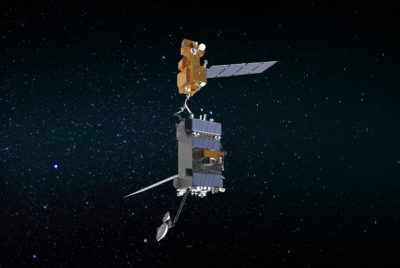Surviving fragment impacts and fires
By AMEER G. MIKHAIL, ALEX G. KURTZ, AND ADAM E. GOSS|December 2017
The Survivability Technical Committee promotes air and spacecraft survivability as a design discipline that includes such factors as crashworthiness, combat and repairability.
To more accurately assess the vulnerability of aircraft, the U.S. Air Force Research Laboratory at Wright-Patterson Air Force Base in Ohio this year focused efforts on fast and accurate modeling of the fragmentation patterns and the front and rear flash duration and intensity of the flash fires that occur when a steel fragment impacts an aluminum plate representing the surface of an aircraft. The overarching objective of this multiyear project is to generate data, perform shock physics modeling and simulation, and develop algorithms for the fragment flash for accurate predictions of aircraft vulnerability to fragment threats and fires. High-speed cameras and laser imaging techniques record the impacts for analysis. The project is being executed in conjunction with a fuel spurt study, which together support an overarching Next Generation Fire Model, or NGFM, initiative.
In conjunction with the fragment flash research and in support of the overarching NGFM initiative, the Air Force Hydrodynamic Ram Spurt Model Development and Validation program is developing an understanding of the fundamental physics associated with ballistically induced, hydraulic ram fuel spurts. This year, the Air Force NGFM initiative funded and initiated the fuel spurts fast modeling and analysis effort with the accompanying needed tests and data for validation of the spurts model. Through physics-based modeling and underpinned with empirical test data and statistical analyses, the developed module will ultimately lead to the development of a fast tool ultimately integrated with higher-level vulnerability assessment codes. This program is in the startup phase and is developing a detailed program plan.
In the maintenance and repair area, the Air Force Expedient Repair program focuses on assessing and demonstrating fast repair techniques that can be carried out in the field on composite airframes with results that will last until the next maintenance cycle. Over the course of several months, the maximum repairable area size of a particular composite surface damage was investigated. The objective is to improve allied-nation interoperability while meeting aircraft availability demands. The Air Force, NATO allies and other organizations are participating in this ongoing program. The goal is to advance the maturity of expedient repair concepts to where they are pre-approved for application to limited damage sizes within certain aircraft zones. The effort focuses on discovering new techniques that improve operational aircraft performance through restoring full operational capability of the composite structures while reducing repair costs. Participating organizations seek to improve expedient repair ease and effectiveness while decreasing requirements associated with repair time, material and labor.
The Air Force Aircraft Damage Effects Assessment program is a project in partnership with NATO to improve aircraft survivability and vulnerability-assessment modeling techniques and to eliminate costly duplication of research and development efforts by collaborating on: development of a combined failure effects model; quantification of composite thermo-mechanical failure properties; assessment of hot surface ignition properties; assessment of aircraft skin-spar joint failure properties; and development of blast mitigation concepts and predictive models.
In civilian aviation, the FAA in May expanded its updated certification requirements to all general aviation pilots, including those trained by the U.S. military, to reflect more reliance on basic flying knowledge and skills and less on managing and observing the complex avionic instruments, as well as less preparing solely for scripted emergency scenarios. This expansion was due to the increased general aviation and airliner crashes attributable to pilot error. The added recertification training also includes recognizing stall condition and how to recover from it. All pilots must be retrained and recertified by March 2019, although in-flight training can start after that date. Contributor: Jason A. Sawdy


































